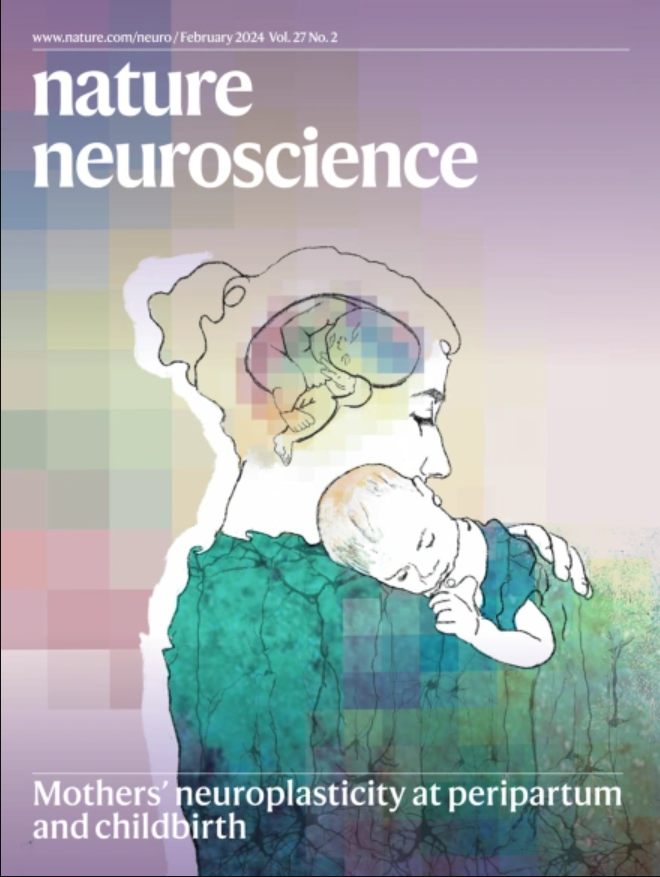期望驱动的感官适应支持在分类知觉中增强的敏锐度
IF 20
1区 医学
Q1 NEUROSCIENCES
引用次数: 0
摘要
期望可以以看似矛盾的方式影响感知,要么通过将注意力引导到预期刺激上并增强感知敏锐度,要么通过在预期刺激类别内稳定感知并降低敏锐度。支持这些期望双重作用的神经机制尚不清楚。在这里,我们训练欧洲椋鸟在预期和意外的声学环境中对模糊的歌曲音节进行分类。我们展示了鸟类使用概率,贝叶斯整合来分类音节,利用他们的期望来稳定他们的感知行为。然而,听觉感觉神经群并不反映这种整合。相反,期望增强了刺激空间高概率区域的听觉感觉神经元的敏锐度。这种调制不同于在运动区域观察到的典型模式,在运动区域,贝叶斯整合的感觉输入和期望占主导地位。我们的研究结果表明,外围感觉系统使用期望来改善感觉表征并保持对世界的高保真表征,从而允许下游电路灵活地将这些信息与期望结合起来,以驱动行为。本文章由计算机程序翻译,如有差异,请以英文原文为准。


Expectation-driven sensory adaptations support enhanced acuity during categorical perception
Expectations can influence perception in seemingly contradictory ways, either by directing attention to expected stimuli and enhancing perceptual acuity or by stabilizing perception and diminishing acuity within expected stimulus categories. The neural mechanisms supporting these dual roles of expectation are not well understood. Here, we trained European starlings to classify ambiguous song syllables in both expected and unexpected acoustic contexts. We show that birds employ probabilistic, Bayesian integration to classify syllables, leveraging their expectations to stabilize their perceptual behavior. However, auditory sensory neural populations do not reflect this integration. Instead, expectation enhances the acuity of auditory sensory neurons in high-probability regions of the stimulus space. This modulation diverges from patterns typically observed in motor areas, where Bayesian integration of sensory inputs and expectations predominates. Our results suggest that peripheral sensory systems use expectation to improve sensory representations and maintain high-fidelity representations of the world, allowing downstream circuits to flexibly integrate this information with expectations to drive behavior. Bayesian models explain how context biases perceptual behavior toward expected categories, but sensory neurons do not reflect this bias. Instead, expectation sharpens sensory acuity, independent of downstream decision making.
求助全文
通过发布文献求助,成功后即可免费获取论文全文。
去求助
来源期刊

Nature neuroscience
医学-神经科学
CiteScore
38.60
自引率
1.20%
发文量
212
审稿时长
1 months
期刊介绍:
Nature Neuroscience, a multidisciplinary journal, publishes papers of the utmost quality and significance across all realms of neuroscience. The editors welcome contributions spanning molecular, cellular, systems, and cognitive neuroscience, along with psychophysics, computational modeling, and nervous system disorders. While no area is off-limits, studies offering fundamental insights into nervous system function receive priority.
The journal offers high visibility to both readers and authors, fostering interdisciplinary communication and accessibility to a broad audience. It maintains high standards of copy editing and production, rigorous peer review, rapid publication, and operates independently from academic societies and other vested interests.
In addition to primary research, Nature Neuroscience features news and views, reviews, editorials, commentaries, perspectives, book reviews, and correspondence, aiming to serve as the voice of the global neuroscience community.
 求助内容:
求助内容: 应助结果提醒方式:
应助结果提醒方式:


